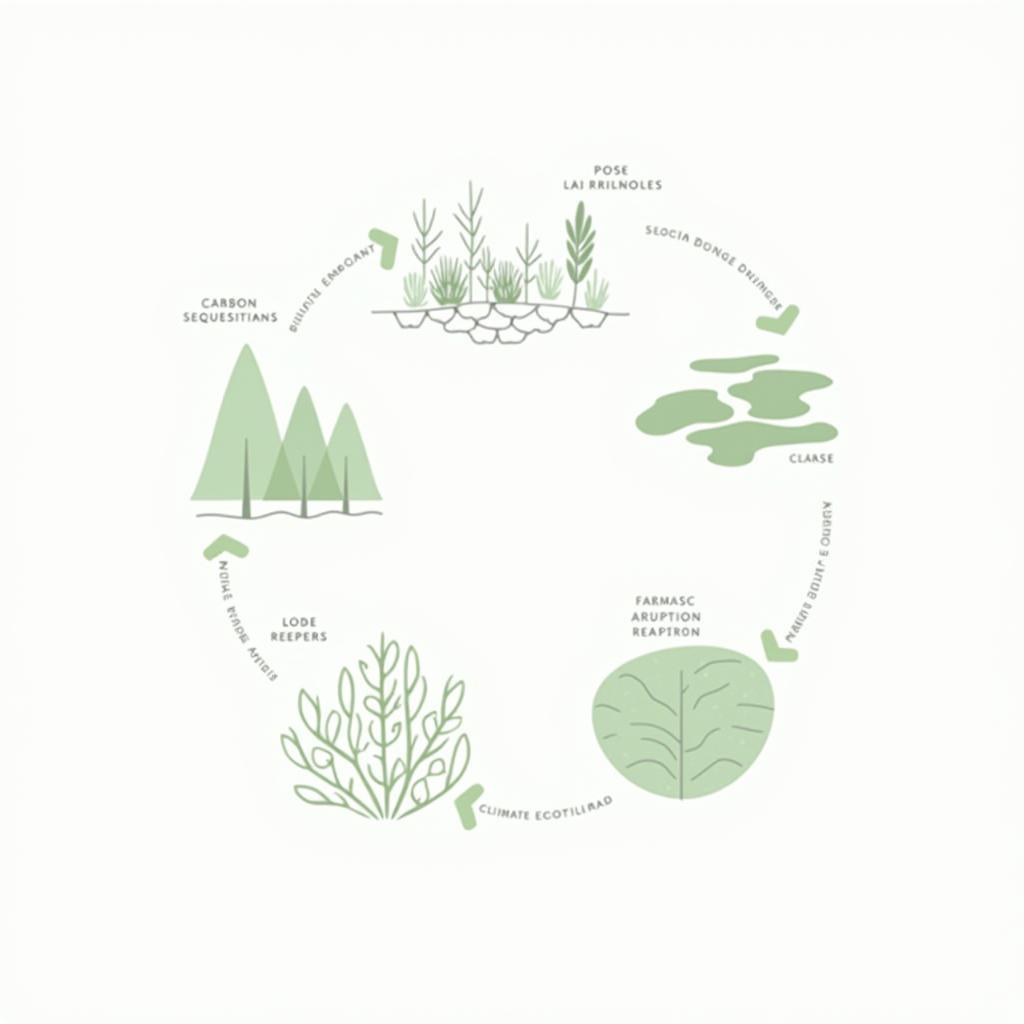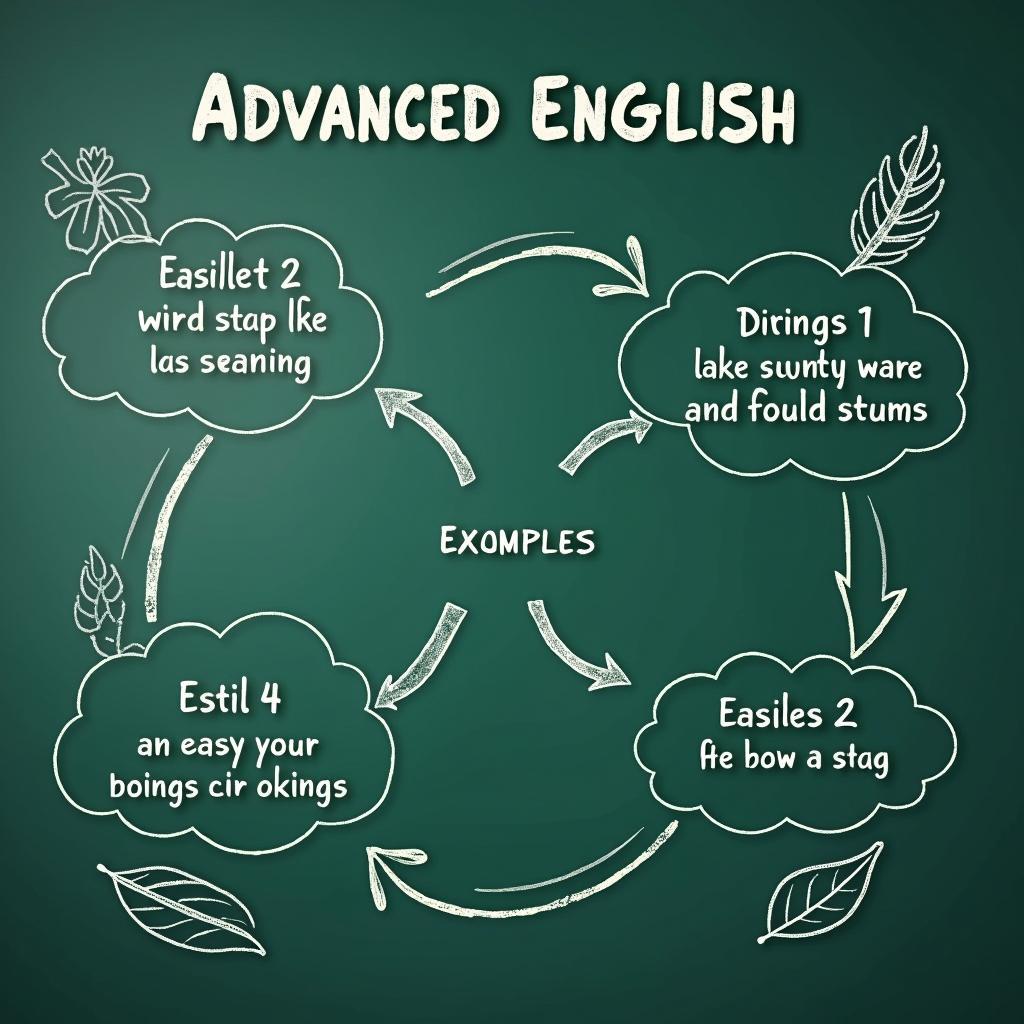Môi trường và biến đổi khí hậu luôn nằm trong nhóm chủ đề “nóng” của IELTS Writing Task 2, đặc biệt là các đề liên quan tới tầm quan trọng của đa dạng sinh học. Chủ đề này xuất hiện thường xuyên vì nó giúp giám khảo đánh giá khả năng lập luận, sử dụng thuật ngữ học thuật và tổ chức luận điểm logic. Trong bài viết này, bạn sẽ học được: 3 bài mẫu hoàn chỉnh (Band 5-6, 6.5-7, 8-9), phân tích chấm điểm theo 4 tiêu chí chính thức, từ vựng và cấu trúc câu ghi điểm, cùng checklist thực hành theo thời gian.
Nội dung bài viết
- 1. Đề Bài và Phân Tích
- 2. Bài Mẫu Band 8-9
- Phân Tích Band Điểm
- Tại Sao Bài Này Đạt Điểm Cao
- 3. Bài Mẫu Band 6.5-7
- Phân Tích Band Điểm
- So Sánh Với Bài Band 8-9
- 4. Bài Mẫu Band 5-6
- Phân Tích Band Điểm
- Học Từ Những Lỗi Sai
- Cách Cải Thiện Từ Band 6 Lên Band 7
- 5. Từ Vựng Quan Trọng
- 6. Cấu Trúc Câu Điểm Cao
- 7. Checklist Tự Đánh Giá
- Kết bài
Một số đề thi thực tế đã được đăng tải trên các nguồn đáng tin cậy:
- Loss of biodiversity is a serious problem worldwide. What are the causes of this loss and what solutions can you suggest? (được đăng trên IELTS Liz – Environment Essay Questions và IELTS-Blog)
- Some animal species are becoming extinct due to human activities on land and in the sea. What are the reasons and what are the solutions? (IELTS-Blog – recent exam questions)
- Some people argue that human needs for land and resources are more important than saving endangered animals. To what extent do you agree or disagree? (xuất hiện trong danh mục đề môi trường trên IELTS Liz và các bộ sưu tập đề của British Council/IDP)
Trong toàn bộ bài, chúng ta sẽ kết nối chủ đề môi trường với trọng tâm SEO: Importance Of Biodiversity In Combating Climate Change, chỉ ra vì sao bảo tồn đa dạng sinh học là giải pháp then chốt để giảm thiểu và thích ứng với biến đổi khí hậu.
 So do tam quan trong cua da dang sinh hoc trong combating climate change
So do tam quan trong cua da dang sinh hoc trong combating climate change
1. Đề Bài và Phân Tích
Loss of biodiversity is a serious problem worldwide. What are the causes of this loss, and what solutions can you suggest to address it?
Dịch đề: Mất đa dạng sinh học là một vấn đề nghiêm trọng trên toàn thế giới. Nguyên nhân của sự suy giảm này là gì và bạn có thể đề xuất những giải pháp nào để giải quyết?
Phân tích đề bài:
- Dạng câu hỏi: Cause–Solution (Nguyên nhân – Giải pháp). Bạn phải trả lời đầy đủ cả hai phần.
- Thuật ngữ quan trọng:
- Biodiversity: Đa dạng sinh học (sự phong phú về loài, gen và hệ sinh thái).
- Habitat loss/fragmentation: Mất/chia cắt môi trường sống.
- Ecosystem services: Dịch vụ hệ sinh thái (như hấp thụ carbon, điều tiết nước).
- Carbon sequestration: Lưu trữ/giữ carbon.
- Lỗi thường gặp:
- Chỉ nói chung về ô nhiễm/biến đổi khí hậu mà bỏ qua mất đa dạng sinh học.
- Không cân đối: viết quá dài phần nguyên nhân, quá ngắn phần giải pháp.
- Dùng sai số nhiều của “species” (species là cả số ít và số nhiều).
- Lạm dụng “first/second/third” mà thiếu liên kết logic và ví dụ cụ thể.
- Cách tiếp cận chiến lược:
- Body 1: 2-3 nguyên nhân điển hình (phá rừng, nông nghiệp đơn canh, loài xâm lấn, biến đổi khí hậu).
- Body 2: 2-3 giải pháp khả thi (bảo vệ và phục hồi sinh cảnh – rewilding, vùng bảo tồn, khuyến khích tài chính như Payments for Ecosystem Services, lồng ghép tri thức bản địa).
- Gắn kết chủ đề với importance of biodiversity in combating climate change: nhấn mạnh chức năng hấp thụ carbon, tăng khả năng chống chịu (resilience) trước cực đoan khí hậu.
2. Bài Mẫu Band 8-9
Bài Band 8-9 cần: lập luận sắc bén, triển khai logic chặt chẽ, ví dụ chọn lọc, từ vựng học thuật chính xác và cấu trúc câu đa dạng nhưng tự nhiên.
Essay (298 words):
Despite the alarming headlines about melting ice and rising seas, the quieter emergency is the erosion of life’s variety itself. Biodiversity is declining primarily because habitats are being cleared, simplified, or polluted. When forests are felled for monoculture plantations, or wetlands are drained for real estate, species lose the niches they rely on. Climate change worsens these trends by shifting temperature and rainfall patterns faster than species can adapt, while invasive species—often spread by trade—outcompete native flora and fauna. In essence, biodiversity loss is not an isolated crisis; it is a feedback loop that accelerates environmental degradation.
To reverse this spiral, solutions must restore complexity to landscapes and align incentives with conservation. First, protecting intact ecosystems and rewilding degraded ones can rebuild food webs and revive keystone species that regulate ecological balance. Tropical forests and mangroves, for example, provide carbon sequestration on a massive scale while buffering communities from storms. Second, policy levers that reward stewardship—such as payments for ecosystem services and deforestation-free supply chains—can shift business practices away from extractive models. Finally, integrating indigenous knowledge into land governance improves outcomes because these communities often manage biodiversity hotspots with proven effectiveness.
Crucially, the importance of biodiversity in combating climate change is both practical and profound: diverse ecosystems store more carbon, recover faster after climate extremes, and reduce the likelihood of catastrophic tipping points. If governments, firms, and citizens coordinate around these evidence-based measures, biodiversity can move from the periphery of environmental policy to its core. The choice is stark but empowering: either continue simplifying nature until it fails, or rebuild complexity and let nature’s resilience work for us.
Only the latter path offers a stable climate, secure food and water, and a livable future for the species we are—and the countless others we depend on.
Phân Tích Band Điểm
| Tiêu chí | Band | Nhận xét |
|---|---|---|
| Task Response (Hoàn thành yêu cầu) | 8.5 | Trả lời đầy đủ nguyên nhân và giải pháp, quan điểm rõ ràng, nhất quán. Có liên hệ mạnh với importance of biodiversity in combating climate change và đưa ví dụ minh họa (rừng nhiệt đới, rừng ngập mặn). |
| Coherence & Cohesion (Mạch lạc & Liên kết) | 8.0 | Tổ chức đoạn hợp lý, mở–thân–kết rõ, dùng thiết bị liên kết tinh tế (in essence, to reverse this, crucially). Không liệt kê khô khan, có chuyển ý mượt. |
| Lexical Resource (Từ vựng) | 8.5 | Từ vựng học thuật phong phú: erosion of life’s variety, niches, keystone species, policy levers, stewardship, tipping points. Collocations chính xác, gần như không lỗi từ vựng. |
| Grammatical Range & Accuracy (Ngữ pháp) | 8.5 | Câu phức đa dạng (mệnh đề quan hệ, phân từ, đảo ngữ nhẹ), dấu câu chuẩn xác. Không có lỗi ngữ pháp gây hiểu lầm. |
Tại Sao Bài Này Đạt Điểm Cao
- Mở bài giàu hình ảnh “the quieter emergency” tạo lập bối cảnh học thuật nhưng tự nhiên.
- Kết nối mạch lạc giữa nguyên nhân và hậu quả bằng “feedback loop” cho thấy tư duy hệ thống.
- Dẫn chứng cụ thể và đúng chỗ: tropical forests, mangroves, invasive species.
- Giải pháp ở cấp hệ thống: rewilding, payments for ecosystem services, supply chains.
- Nhấn trọng tâm SEO: importance of biodiversity in combating climate change đặt ở luận điểm chủ đạo.
- Collocations học thuật chính xác: revive keystone species, deforestation-free supply chains, integrate indigenous knowledge.
- Kết luận có sức nặng, nêu lựa chọn chiến lược “simplifying vs rebuilding complexity”.
 Chien luoc viet Writing Task 2 moi truong va biodiversity
Chien luoc viet Writing Task 2 moi truong va biodiversity
3. Bài Mẫu Band 6.5-7
Đặc điểm: ý rõ ràng, bố cục chuẩn, có ví dụ nhưng độ tinh tế, phạm vi từ vựng và cấu trúc chưa sâu như Band 8-9.
Essay (265 words):
Biodiversity is decreasing in many regions, and this creates risks for both nature and people. The main causes are the destruction of habitats and unsustainable economic activities. For example, when large areas of forest are cut down for agriculture, many species lose their homes and cannot survive. Pollution from factories and plastic waste also damages rivers and oceans, which reduces fish populations and harms coral reefs. In addition, climate change makes heatwaves and storms more frequent, and some animals and plants cannot adapt to these rapid changes.
There are several practical solutions. Firstly, governments should protect key ecosystems by creating more national parks and restricting logging and illegal fishing. This would keep habitats connected and allow species to recover. Secondly, farmers and companies can adopt better practices, such as using mixed crops instead of monoculture and keeping buffer zones along rivers to reduce pollution. Finally, education and community programs can encourage people to change their consumption habits, including choosing products that come from sustainable sources.
The importance of biodiversity in combating climate change should be emphasized. Diverse forests store more carbon and recover faster after fires or storms. Wetlands also absorb floodwaters and help cities adapt to extreme weather. If we combine protection, better business practices, and public awareness, biodiversity loss can be slowed down, and our societies will be more resilient in the long term.
Overall, while economic development is necessary, we should avoid short-term gains that destroy ecosystems. Protecting biodiversity is not a luxury but a foundation for climate stability and human well-being.
Phân Tích Band Điểm
| Tiêu chí | Band | Nhận xét |
|---|---|---|
| Task Response (Hoàn thành yêu cầu) | 7.0 | Trả lời đủ hai phần, có ví dụ thực tế. Liên hệ khí hậu hợp lý nhưng chưa có dẫn chứng sâu ở cấp chính sách. |
| Coherence & Cohesion (Mạch lạc & Liên kết) | 7.0 | Bố cục quen thuộc, ý nối rõ ràng với firstly/secondly/finally. Liên kết hợp lý nhưng còn mang tính liệt kê. |
| Lexical Resource (Từ vựng) | 6.5 | Từ vựng đúng và phù hợp (buffer zones, monoculture), nhưng phạm vi chưa thật đa dạng; collocations còn an toàn. |
| Grammatical Range & Accuracy (Ngữ pháp) | 7.0 | Câu phức mức vừa, ít lỗi. Có thể đa dạng hóa thêm mệnh đề quan hệ và cấu trúc nâng cao. |
So Sánh Với Bài Band 8-9
- Độ sâu phân tích: Band 8-9 dùng khái niệm hệ thống (feedback loop, policy levers), Band 6.5-7 thiên về mô tả.
- Ví dụ: Band 8-9 nêu cụ thể cơ chế (rewilding, deforestation-free supply chains), Band 6.5-7 nêu khuyến nghị chung (national parks, education).
- Từ vựng: Band 8-9 giàu collocations học thuật; Band 6.5-7 dùng từ đúng nhưng ít đa dạng.
- Cấu trúc: Band 8-9 đa dạng cấu trúc nâng cao; Band 6.5-7 chủ yếu dùng câu phức cơ bản.
4. Bài Mẫu Band 5-6
Đặc điểm: ý còn rời rạc, ví dụ chung chung, lỗi ngữ pháp và từ vựng xuất hiện; vẫn bám đề nhưng phát triển chưa sâu.
Essay (258 words):
Nowadays biodiversity is reducing in many places, and this is a big problem. There are many reasons. People cut down the forests too much and animals lost their place. Factories make pollution to rivers and the air. Also, climate change are making weather become very extreme and some species cannot live. Another reason is people like hunting and they catch fishes too many, so the number of animals go down.
There are solutions but they are not easy. Governments should make more laws and punish strong the people who break the laws. We need to plant more trees and stop using plastic bags. Schools should teach students about environment and animals. Companies should not throw waste to the sea and they must pay money if they do it.
The importance of biodiversity in combating climate change is clear, but many people do not know. Forest can store carbon and ocean can also help. If we protect nature, then climate change will stop or at least reduce. In conclusion, people must change their bad behaviors and government must control strictly. This will save animals and make the future better.
Overall, I agree that biodiversity is very important, and we must protect it for next generation. If everyone do something small, together it will be big.
Phân Tích Band Điểm
| Tiêu chí | Band | Nhận xét |
|---|---|---|
| Task Response (Hoàn thành yêu cầu) | 6.0 | Trả lời được nguyên nhân và giải pháp nhưng thiếu chiều sâu, ví dụ mơ hồ, giải pháp chung chung. |
| Coherence & Cohesion (Mạch lạc & Liên kết) | 6.0 | Có mở–thân–kết rõ, nhưng chuyển ý đột ngột, lặp từ, dùng liên kết đơn giản. |
| Lexical Resource (Từ vựng) | 5.5 | Từ vựng cơ bản, lặp lại; collocations chưa tự nhiên (punish strong). Một số lựa chọn từ sai/thiếu tự nhiên. |
| Grammatical Range & Accuracy (Ngữ pháp) | 5.5 | Lỗi mạo từ, chia động từ, số ít/số nhiều, giới từ. Câu đơn nhiều, ít cấu trúc nâng cao. |
Học Từ Những Lỗi Sai
| Lỗi sai | Loại lỗi | Sửa lại | Giải thích |
|---|---|---|---|
| People cut down the forests too much and animals lost their place. | Mạo từ, từ vựng | People cut down forests excessively, and animals lose their habitats. | Forests không cần the ở nghĩa chung; dùng excessively tự nhiên hơn; habitats chính xác hơn place. |
| climate change are making weather become very extreme | Chia động từ, từ thừa | Climate change is making the weather more extreme. | Climate change là số ít; the weather; so sánh hơn more extreme, bỏ become. |
| people like hunting and they catch fishes too many | Collocation, đếm được | People overhunt and overfish, reducing wildlife populations. | Overhunt/overfish là động từ chính xác; fish thường không thêm -es khi nói chung. |
| punish strong the people | Collocation, trật tự từ | impose heavy penalties on offenders | Collocation tự nhiên; trật tự từ đúng. |
| Companies should not throw waste to the sea | Giới từ | Companies should not dump waste into the sea | Dump waste into the sea là cụm chuẩn. |
| If everyone do something small | Chia động từ | If everyone does something small | Everyone đi với does (số ít). |
Cách Cải Thiện Từ Band 6 Lên Band 7
- Bổ sung dữ liệu/cơ chế: nêu ví dụ cụ thể (mangroves store blue carbon; buffer strips reduce runoff).
- Đa dạng cấu trúc: thêm mệnh đề quan hệ, cụm phân từ, câu điều kiện nâng cao.
- Nâng cấp collocations: impose strict penalties, habitat fragmentation, restore degraded ecosystems.
- Kiểm tra lỗi cơ bản: a/an/the, chia động từ theo chủ ngữ, giới từ phổ biến (in/on/into).
- Cân đối phần thân bài: mỗi đoạn 2 ý chính + giải thích + ví dụ ngắn.
5. Từ Vựng Quan Trọng
| Từ/Cụm từ | Loại từ | Phiên âm | Nghĩa tiếng Việt | Ví dụ (English) | Collocations |
|---|---|---|---|---|---|
| biodiversity | n. | /ˌbaɪoʊdaɪˈvɜːrsəti/ | đa dạng sinh học | Biodiversity underpins food security and climate resilience. | biodiversity loss; rich biodiversity |
| carbon sequestration | n. | /ˈkɑːrbən ˌsiːkwəˈstreɪʃn/ | lưu trữ carbon | Mangroves provide high rates of carbon sequestration. | enhance/increase carbon sequestration |
| ecosystem services | n. | /ˈiːkoʊˌsɪstəm ˈsɜːrvɪsɪz/ | dịch vụ hệ sinh thái | Wetlands deliver crucial ecosystem services. | provide/deliver/maintain ecosystem services |
| keystone species | n. | /ˈkiːstoʊn ˈspiːʃiːz/ | loài chủ chốt | Removing a keystone species can collapse a food web. | protect/restore keystone species |
| habitat fragmentation | n. | /ˈhæbɪtæt ˌfræɡmənˈteɪʃn/ | chia cắt sinh cảnh | Roads often cause habitat fragmentation. | reduce/avoid habitat fragmentation |
| rewilding | n./v. | /ˌriːˈwaɪldɪŋ/ | tái hoang dã | Rewilding can reintroduce lost predators. | implement/scale up rewilding |
| monoculture | n. | /ˈmɒnəkʌltʃər/ | đơn canh | Monoculture undermines soil health. | shift from monoculture to mixed cropping |
| resilience | n. | /rɪˈzɪliəns/ | khả năng chống chịu | Diverse systems show higher resilience to shocks. | build/enhance ecosystem resilience |
| tipping point | n. | /ˈtɪpɪŋ pɔɪnt/ | điểm bùng phát | Crossing a climate tipping point is risky. | approach/cross/avoid a tipping point |
| mitigate | v. | /ˈmɪtɪɡeɪt/ | giảm thiểu | Green infrastructure can mitigate floods. | mitigate climate change/risks/impacts |
| exacerbate | v. | /ɪɡˈzæsərbeɪt/ | làm trầm trọng | Deforestation exacerbates droughts. | exacerbate problems/inequalities |
| stewardship | n. | /ˈstuːərdʃɪp/ | quản trị, coi sóc | Community stewardship improves outcomes. | environmental/resource stewardship |
| trade-off | n. | /ˈtreɪd ɒf/ | đánh đổi | There is a trade-off between yield and diversity. | manage/navigate trade-offs |
| policy levers | n. | /ˈpɑːlisi ˈliːvərz/ | đòn bẩy chính sách | Taxes and subsidies are policy levers. | use/activate policy levers |
| indigenous knowledge | n. | /ɪnˈdɪdʒənəs ˈnɒlɪdʒ/ | tri thức bản địa | Indigenous knowledge guides sustainable use. | integrate/respect indigenous knowledge |
6. Cấu Trúc Câu Điểm Cao
- Câu phức với mệnh đề phụ thuộc
- Công thức: Mệnh đề chính + when/while/because/although + mệnh đề phụ thuộc
- Ví dụ từ bài Band 8-9: When forests are felled for monoculture plantations, species lose the niches they rely on.
- Vì sao ghi điểm: Nêu quan hệ nhân quả/thời gian rõ ràng, tăng tính logic.
- Ví dụ bổ sung:
- Although biodiversity is declining, policymakers still prioritize short-term gains.
- Because wetlands absorb floodwaters, cities should preserve them.
- Lỗi thường gặp: Thiếu động từ trong mệnh đề; dấu phẩy sai vị trí.
- Mệnh đề quan hệ không xác định (non-defining relative clause)
- Công thức: Danh từ chung + , which/whose/who + mệnh đề
- Ví dụ: Tropical forests and mangroves, which provide carbon sequestration on a massive scale, also protect communities.
- Điểm mạnh: Bổ sung thông tin học thuật mượt mà.
- Ví dụ bổ sung:
- Biodiversity, which underpins food systems, is often overlooked.
- Coral reefs, which shelter countless species, are bleaching.
- Lỗi thường gặp: Quên dấu phẩy; dùng that thay cho which.
- Cụm phân từ (participle phrases)
- Công thức: V-ing/V-ed + cụm bổ nghĩa, + mệnh đề chính
- Ví dụ: Integrating indigenous knowledge into land governance, governments can improve outcomes.
- Điểm mạnh: Nén thông tin, tránh lặp chủ ngữ.
- Ví dụ bổ sung:
- Facing rising seas, coastal cities are restoring mangroves.
- Driven by profit, firms may ignore externalities.
- Lỗi thường gặp: Treo ngữ (dangling participle) không trùng chủ ngữ.
- Câu chẻ (Cleft sentence)
- Công thức: It is/was + X + that/who + mệnh đề
- Ví dụ: It is biodiversity that enables ecosystems to absorb shocks and recover.
- Điểm mạnh: Nhấn ý quan trọng, tăng tính thuyết phục.
- Ví dụ bổ sung:
- It is policy design that determines long-term success.
- It is community buy-in that makes programs sustainable.
- Lỗi thường gặp: Lạm dụng gây nặng nề; chia thì sai.
- Câu điều kiện nâng cao (mixed/third conditional)
- Công thức: If + past perfect, would + V (hiện tại); hoặc biến thể
- Ví dụ: If governments, firms, and citizens coordinated, biodiversity could move to the core of policy.
- Điểm mạnh: Giả định chính sách, thể hiện tư duy phản biện.
- Ví dụ bổ sung:
- If costs were internalized, companies would innovate faster.
- If habitats had been protected, some extinctions might have been avoided.
- Lỗi thường gặp: Nhầm thì; dùng would ở mệnh đề if.
- Đảo ngữ (Inversion) nhấn mạnh
- Công thức: Not only + trợ động + S + V, but also …
- Ví dụ: Only by rebuilding complexity can we restore resilience.
- Điểm mạnh: Nhấn ý, đa dạng hóa cấu trúc.
- Ví dụ bổ sung:
- Not only does rewilding restore species, but it also stores carbon.
- Rarely have policymakers aligned incentives so clearly.
- Lỗi thường gặp: Thiếu trợ động; trật tự từ sai.
 Cau truc cau band cao cho bai luan moi truong IELTS
Cau truc cau band cao cho bai luan moi truong IELTS
7. Checklist Tự Đánh Giá
Trước khi viết
- Xác định dạng bài: Opinion/Discuss/Cause–Solution/Advantages–Disadvantages.
- Gạch nhanh 2-3 nguyên nhân và 2-3 giải pháp; chèn 1-2 ví dụ cụ thể liên quan đến biodiversity và climate.
- Chọn luận điểm trung tâm: importance of biodiversity in combating climate change.
Trong khi viết
- Mở bài: paraphrase đề + tuyên bố hướng luận.
- Mỗi body: 2 ý chính + giải thích + ví dụ; dùng từ nối mượt (crucially, consequently, in turn).
- Kiểm tra articles (a/an/the), chia thì, giới từ.
Sau khi viết
- Soát lỗi “species” (không thêm -es khi nói chung), số ít/số nhiều.
- Tìm từ lặp và thay bằng collocations: habitat loss → habitat fragmentation; punish strong → impose heavy penalties.
- Đảm bảo có câu kết mở rộng liên hệ khí hậu.
Quản lý thời gian
- 5 phút lập dàn ý; 25 phút viết; 5 phút soát lỗi.
- Ưu tiên hoàn chỉnh Task Response và mạch lạc trước khi nâng câu.
Kết bài
Trong IELTS Writing Task 2, chủ đề môi trường thường yêu cầu khả năng kết nối nhiều lớp ý: nguyên nhân – hậu quả – giải pháp – tác động hệ thống. Với trọng tâm importance of biodiversity in combating climate change, bạn cần nêu rõ vì sao đa dạng sinh học là “hạ tầng tự nhiên” chống biến đổi khí hậu: lưu trữ carbon, tăng khả năng phục hồi sau thiên tai, và giảm rủi ro điểm bùng phát. Con đường cải thiện điểm số đến từ: dàn ý chiến lược, ví dụ cụ thể, collocations chuẩn và cấu trúc câu đa dạng nhưng tự nhiên.
Hãy luyện viết đều đặn, đăng bài trong cộng đồng để nhận phản hồi, và quay lại chỉnh sửa sau 24 giờ để nâng cấp từ vựng và cấu trúc. Thời gian cải thiện thực tế từ 6.5 lên 7.0 thường 4–8 tuần nếu luyện tập có kế hoạch. Tài nguyên bổ sung: [internal_link: Cách viết Cause–Solution], [internal_link: Từ vựng chủ đề Môi trường], [internal_link: Linking words cho Writing Task 2]. Khi bạn nắm vững tư duy hệ thống và kỹ thuật lập luận, đề nào về đa dạng sinh học hay khí hậu cũng sẽ trở nên “dễ thở” và đáng điểm hơn.


